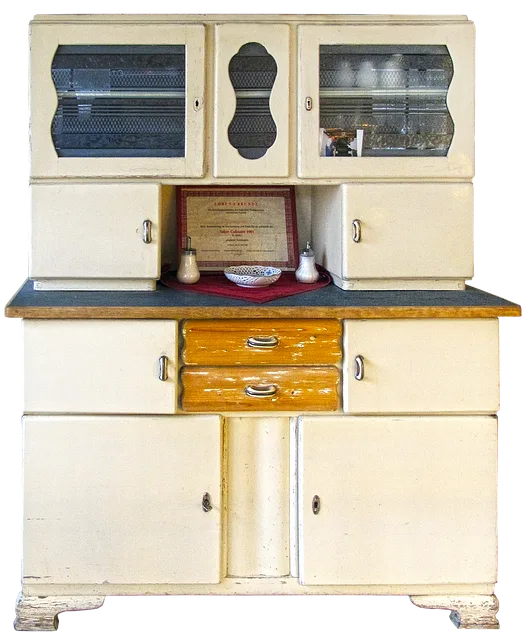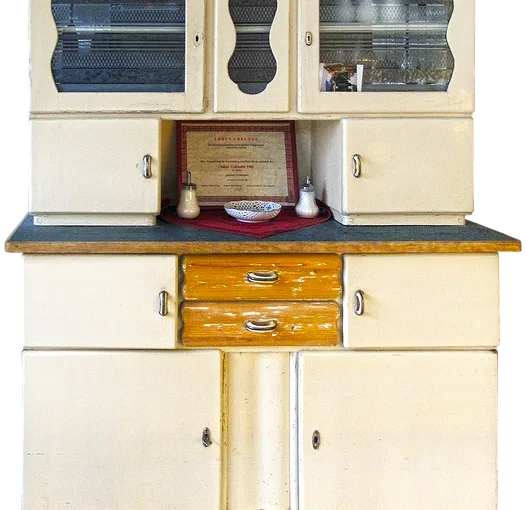First off, gather your materials. You’ll need crown molding, a miter saw, a nail gun or hammer, wood glue, and a measuring tape. Think of crown molding as the cherry on top of your kitchen sundae—it’s the finishing touch that ties everything together.
Start by measuring the top of your cabinets. This is crucial because you want your crown molding to fit like a glove. Once you have your measurements, cut the molding at a 45-degree angle using your miter saw. This angle is key; it’s like the secret handshake that allows the pieces to fit together seamlessly at the corners.
Next, it’s time to attach the molding. Apply a bit of wood glue to the back of the molding for extra hold, then position it on top of your cabinets. If you’re using a nail gun, shoot in some nails to secure it in place. If you’re going old school with a hammer, just be careful not to split the wood.
Now, here’s a pro tip: don’t rush! Take your time to ensure everything is level and aligned. It’s like putting together a puzzle; the satisfaction comes when all the pieces fit perfectly.
Once everything is nailed down, fill in any gaps or nail holes with wood filler, and sand it down for a smooth finish. Finally, a coat of paint or stain can really make your crown molding pop, giving your kitchen that wow factor.
So, are you ready to elevate your kitchen game? With a little patience and creativity, you’ll have stunning crown molding that makes your cabinets shine!
Elevate Your Kitchen: A Step-by-Step Guide to Installing Crown Molding on Cabinets

First things first, gather your tools. You’ll need a miter saw, a nail gun, wood glue, and, of course, your crown molding. Think of this as your treasure map; each tool is a step toward your shiny new kitchen. Measure the top of your cabinets carefully—this is where precision is key. You wouldn’t want to bake a cake without measuring the ingredients, would you?

Next, cut your crown molding at a 45-degree angle. This is where the magic happens! When you fit those pieces together, they should create a seamless look, almost like a puzzle coming together. If you’re feeling a bit nervous about cutting, practice on some scrap wood first. It’s like rehearsing for a big performance; you want to nail it when the spotlight’s on!
Once your pieces are cut, it’s time to attach them. Apply wood glue to the back of the molding and press it against the cabinet. Then, use your nail gun to secure it in place. It’s like giving your cabinets a stylish hat—one that they’ll wear proudly!
Finally, fill in any gaps with caulk and paint or stain to match your cabinets. This step is like adding the final brush strokes to a masterpiece. With just a little effort, you’ll transform your kitchen into a space that feels both elegant and inviting. So, are you ready to roll up your sleeves and get started? Your dream kitchen awaits!
Crown Molding Magic: Transform Your Kitchen Cabinets with These Simple Tips
First off, consider the style of your kitchen. Are you going for a modern vibe or something more traditional? Choosing the right crown molding is crucial. Think of it as the perfect accessory to your outfit; it should complement your overall look. For a sleek, contemporary kitchen, opt for clean lines and minimalistic designs. On the other hand, if your kitchen has a classic feel, ornate crown molding can add that touch of elegance.
Next, let’s talk about installation. Don’t let the thought of DIY scare you! Installing crown molding can be as easy as pie with the right tools and a little patience. Measure twice, cut once—this old adage rings true here. And remember, it’s all about the angles. A miter saw can be your best friend, helping you achieve those perfect corners that make your cabinets pop.
Now, let’s not forget about paint! A fresh coat can work wonders. Whether you choose to match the molding with your cabinets or go for a bold contrast, paint can breathe new life into your space. It’s like giving your kitchen a mini makeover without breaking the bank.
So, are you ready to unleash the crown molding magic in your kitchen? With just a few tweaks, you can transform your cabinets into a stunning focal point that will leave your guests in awe!
From Drab to Fab: How Crown Molding Can Revitalize Your Kitchen Cabinets
Crown molding is like the cherry on top of your kitchen sundae. It adds that touch of elegance and sophistication, making your cabinets pop. Think of it as the finishing touch that takes your kitchen from “meh” to “wow!” It’s a simple addition that can create a seamless transition between your cabinets and the ceiling, giving the illusion of height and space. Who wouldn’t want their kitchen to feel more open and inviting?
Now, you might be wondering, “Is it really that easy?” Absolutely! Installing crown molding isn’t just for the pros. With a little patience and the right tools, you can tackle this DIY project yourself. Plus, it’s a fantastic way to express your personal style. Whether you prefer a classic, ornate design or a sleek, modern look, there’s a crown molding style that fits your taste.
DIY Delight: Mastering the Art of Crown Molding Installation for Kitchen Cabinets
First off, let’s talk about the materials. You’ll want to choose a lightweight material like polyurethane or polystyrene, which is not only easy to handle but also budget-friendly. Think of it as the perfect canvas for your kitchen masterpiece. Once you’ve got your molding, it’s time to measure. And I mean really measure! Grab that tape measure and channel your inner architect. Precision is key here; a small miscalculation can lead to gaps that’ll make you cringe every time you open your cabinets.
Now, let’s get to the fun part—cutting! Using a miter saw, you’ll create those perfect angles that make your crown molding fit like a glove. It’s a bit like piecing together a puzzle; each cut needs to be just right for the whole picture to come together beautifully. Don’t forget to dry fit the pieces before you commit to gluing them in place. This is your chance to play around and see what looks best!
Once you’re satisfied with the fit, it’s time to secure the molding. A good adhesive and some finishing nails will do the trick. As you apply the molding, think of it as wrapping a gift; you want everything to be neat and tidy. And just like that, you’re transforming your kitchen into a space that feels both cozy and chic. So, roll up those sleeves and get ready to impress!
Frequently Asked Questions
What Tools Do I Need to Install Crown Molding on Kitchen Cabinets?
To install crown molding on kitchen cabinets, you will need a miter saw for precise angle cuts, a measuring tape for accurate lengths, a level to ensure straight installation, a nail gun or hammer for securing the molding, wood glue for added stability, and a caulk gun for finishing touches. Additionally, having safety goggles and a dust mask is recommended for protection during the process.
Can I Install Crown Molding on Existing Cabinets?
Yes, you can install crown molding on existing cabinets. This enhances the aesthetic appeal and provides a finished look. Ensure proper measurements and use appropriate adhesive or fasteners for a secure fit.
What are the Steps to Install Crown Molding on Kitchen Cabinets?
To install crown molding on kitchen cabinets, first measure the cabinet tops to determine the length of molding needed. Cut the molding at a 45-degree angle for corners. Secure the molding to the cabinets using a nail gun or adhesive, ensuring it fits snugly against the wall and cabinets. Fill any gaps or nail holes with wood filler, then sand and paint or stain as desired for a finished look.
How Do I Measure for Crown Molding on Cabinets?
To measure for crown molding on cabinets, start by determining the height and depth of the cabinets. Use a tape measure to find the width of each cabinet section where the molding will be installed. Record these measurements, ensuring to account for any angles or corners. For angled ceilings, measure the angle to ensure a proper fit. Finally, add a few extra inches to each measurement for adjustments during installation.
What Type of Crown Molding is Best for Kitchen Cabinets?
When selecting crown molding for kitchen cabinets, consider materials like wood or medium-density fiberboard (MDF) for durability and aesthetics. Opt for styles that complement your kitchen’s design, such as traditional, modern, or farmhouse. The best choice balances visual appeal with functionality, ensuring it enhances the overall look while being easy to maintain.
